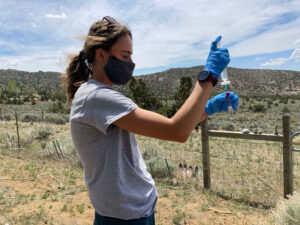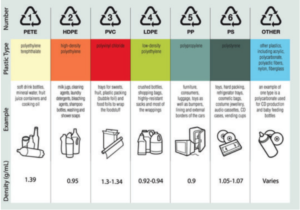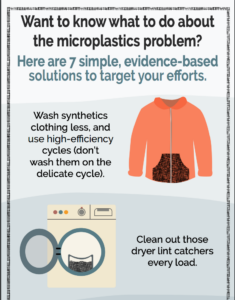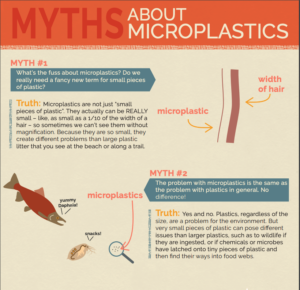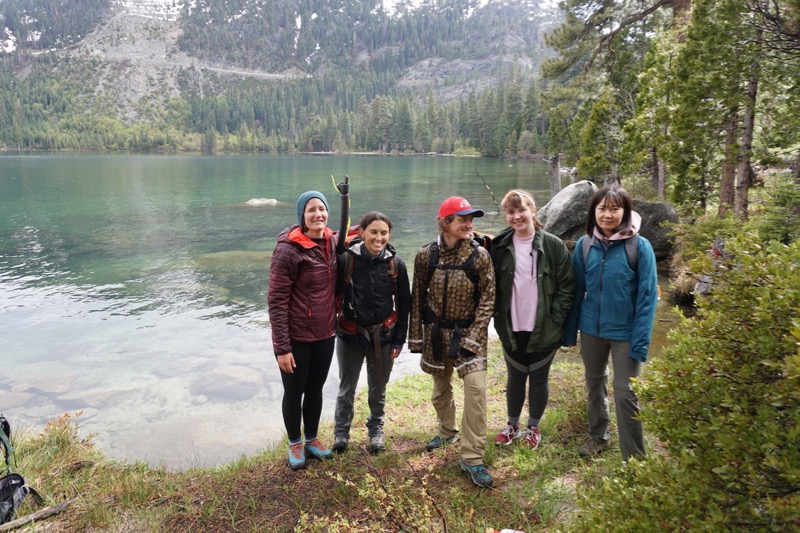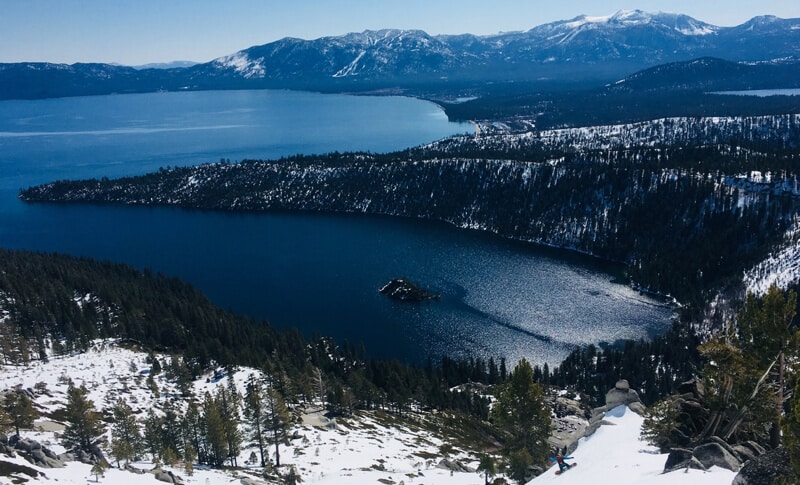Microplastics and Environmental Chemistry Laboratory
Lab Description
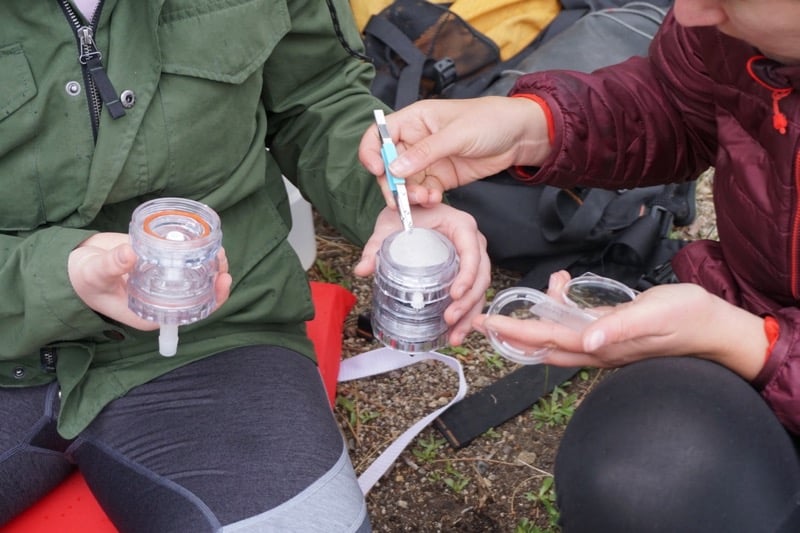
The Microplastics and Environmental Chemistry Research Team at the Desert Research Institute applies chemical techniques to study human – environment interactions. We conduct field and laboratory studies of surface water, groundwater, drinking water, and seasonal snow. We also study historical and recent wildfires through the analysis of lake sediments and field-based studies. We are dedicated to developing novel methodologies that support more efficient sample collection, analysis, and sample and data standardization.
The Microplastics and Environmental Chemistry Research Team is composed of Research Professors, Scientists, and Graduate/Undergraduate students. We welcome diverse collaborations with research and university faculty, consultants, government agencies, non-profits, and beyond. We collaborate on proposals, contribute to grant writing, consult on study design, and conduct analyses (check out the Instrumentation tab below). We also conduct training for students, post docs, and visiting researchers.
Current Research and Community Engagement Activities:
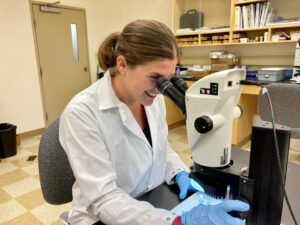
- Assessing Microplastic Pollution in the Lake Tahoe Basin and Sierra Nevada Snow and Water. Lake Tahoe is a naturally formed, alpine lake that is protected by numerous state and local laws with the intent to preserve lake clarity, ecosystem health, and drinking water quality. We are conducting a watershed scale assessment of microplastic pollution in Lake Tahoe watershed and surrounding Sierra Nevada snow and water. Funding is provided by the National Science Foundation. Check out our latest publication titled “Polymer Characterization of Submerged Plastic Litter from Lake Tahoe, United States”
- Developing Citizen Science Programs that Engage the Public in Microplastic Research and Mitigation Efforts. Citizen Science programs developed in conjunction with the League to Save Lake Tahoe, are engaging the community in microplastic research, education, and mitigation. These programs include citizen collected water samples to support microplastic monitoring efforts; and engaging the community to test the efficacy of microplastic collection. Funding is provided by the DRI Foundation.
- Sampling and Identifying Microplastic Pollution. Our team is developing methodologie
 s that will improve on existing approaches by increasing the ease of sample collection and analysis, advancing data quality, and establishing standardization guidelines to facilitate microplastic pollution comparisons between studies. Funding is provided by the National Science Foundation. Link to publication. Check out our publication titled “A Peristaltic Pump and Filter-Based Method for Aqueous Microplastic Sampling and Analysis”.
s that will improve on existing approaches by increasing the ease of sample collection and analysis, advancing data quality, and establishing standardization guidelines to facilitate microplastic pollution comparisons between studies. Funding is provided by the National Science Foundation. Link to publication. Check out our publication titled “A Peristaltic Pump and Filter-Based Method for Aqueous Microplastic Sampling and Analysis”. - Microplastic contamination of the Tonle Sap and Mekong River. Our team is working with Wonders of the Mekong to understand the impact plastic pollution is having on the water quality of two important rivers in Cambodia.
- Microplastics and PFAS in Hot Springs. In partnership with the Bureau of Land Management, we are studying microplastic and per- and poly-fluoroalkyl substance (PFAS) contamination in thermal springs in the Black Rock Desert of northern Nevada to inform management decisions related to the recreational use of the springs.
- Are Dryers a Source of Microplastics? Our team is working with collaborators to understand if clothes dryers emit microplastics in the environment. We connected with citizen scientists in the region to study this. This work was funded by REI Co-op.
- Mountain Rain or Snow. This project is funded by NASA and uses citizen science to study the phase of precipitation. To learn more about this project, visit https://rainorsnow.org/home!
- Metal Contamination in Private Wells. Are private drinking water wells in Nevada contaminated with metals? Our team is working with homeowners around Nevada to understand potential exposure to metals. This work is funded by the NIH. Check out our latest publication titled “Naturally occurring metals in unregulated domestic Wells in Nevada, USA” and “Predictions of Arsenic in Domestic Well Water Sourced from Alluvial Aquifers of the Western Great Basin, USA.”

- Fire temperature. We are currently developing a method to reconstruct the temperature of fire. We aim to apply this method to paleofire studies and to better understand the impacts of fire temperature on post-fire hydrology.
Our Team
Monica Arienzo, PhD (she/her)
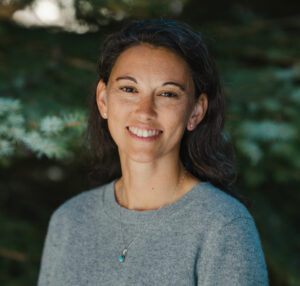
Monica Arienzo is an Associate Research Professor in the Division of Hydrologic Sciences at the Desert Research Institute. After years of studying caves in the Bahamas and ice cores from Antarctica, now she leads the Microplastics and Environmental Chemistry Research Team. Her interests are developing novel chemical tools to answer important environmental questions. When she’s not in the lab, you can find her hiking, running, snowboarding, or playing ultimate Frisbee. You can learn more by visiting her DRI personnel page and her Google scholar link.
(775) 673-7693
monica.arienzo@www-dev.dri.edu
Daniel Saftner, M.Sc. (he/him)

Daniel Saftner is an Assistant Research Hydrogeologist in the Division of Hydrologic Sciences at the Desert Research Institute. His research focuses on developing hydrologic tools, tests, and models that help rural communities prepare for and respond to issues surrounding water resources sustainability and environmental health. Dan’s experiences as a Peace Corps Volunteer and Fulbrighter in Africa continue to inspire him to use his background in hydrogeology to serve disadvantaged populations. Dan enjoys travel, live music, skiing, softball, and camping in the desert with his partner and pup.
(775) 673-7422
daniel.saftner@www-dev.dri.edu
Meghan Collins, M.Sc. (she/her)

Meghan Collins is an Associate Research Scientist, Environmental Science and Education Program Manager. She works to expand experiential learning and career-based STEM opportunities and translate the valuable results of DRI science to our communities.
Meghan.Collins@www-dev.dri.edu
Graduate Students:
Rachel Kozloski

Rachel Kozloski is a PhD student in UNR’s Graduate Program of Hydrologic Sciences. Prior to beginning her PhD, Rachel worked in the private and government sectors as a soil scientist and environmental analyst. Her research focuses on microplastics in urban runoff and microplastic movement in connected surface and groundwater systems. When she is not conducting lab analyses or doing fieldwork she is equally happy exploring wild places or curled up with her dogs and a good book.
Hannah Lukasik

Hannah Lukasik is a M.S. student in UNR’s Hydrologic Sciences Program. Her work includes studying microplastic concentrations in the Lower Colorado River compared to the Truckee River. She is passionate about clean drinking water and any contaminant that could negatively impact water quality. Originally from Wisconsin, she is excited to be in the presence of mountains and loves to spend her time outside biking, swimming, and kayaking or doing anything that allows her to be creative and curious.
Kerri Minatre, M.Sc.

Kerri Minatre is a PhD student in UNR’s Ecology, Evolution, and Conservation Biology program. Her research focuses on using charcoal properties to infer properties of fire and associated ecological effects on ecosystems. She uses her background in archaeology, soil sciences, and fire ecology to inform her work. When she is not conducting lab analyses or doing fieldwork she enjoys trail running with her cattle dogs, camping, and working on her small urban farm.
Undergraduates/Technicians:
Angelique DePauw (she/her)

Angelique DePauw is an undergraduate student at the University of Nevada, Reno and is originally from Los Osos, California. She is working to complete her B.S. degree in Hydrogeology. When she is not conducting lab analyses, she enjoys working in her garden, trying out new recipes, and hiking and camping.
Helen Lei

Helen is an undergraduate student in the Integrated Elementary Teaching program, pursuing a bachelor’s degree in Elementary Education and minoring in Environmental Science. Her future goals are driven by her interests in water quality and environmental sustainability, with focus on watershed protection. In her free time, you can find her at home cooking up a new dish, playing with her cats, and rewatching her favorite shows
Luisa Ortega

Luisa completed her B.S. degree in Environmental Science with an emphasis in Ecological Conservation and Restoration. Her research in the Microplastics and Environmental Chemistry Laboratory explored using citizen scientists to collect samples for microplastic monitoring in collaboration with the League to Save Lake Tahoe’s Pipe Keepers Program.
Alums:
Julia Davidson
Julia is an undergraduate student at the University of Nevada Reno. She completed her B.S. degrees in Chemistry and Education. In the Microplastics and Environmental Chemistry Laboratory, she explored plastic pollution in Lake Tahoe, in collaboration with Clean Up the Lake.
Erika Robtoy

Erika Robtoy is an undergraduate student at the University of Nevada Reno and is originally from Sparks, NV. She is working to complete her B.S. degree in Hydrogeology. Her current research in the Microplastics and Environmental Chemistry Laboratory explores metal contamination in private drinking water wells in Nevada. When she is not conducting lab analyses she enjoys trail running, rock climbing, and skiing.
The DRI Microplastics and Environmental Chemistry Laboratory is equipped to apply chemical approaches in a range of complex environmental samples. Our facilities include three main rooms: a HEPA filtered laboratory for sample preparation, a wet chemistry laboratory with fume hood, and a student workstation and sample and field equipment storage. We also work in the Micro Analysis & Visualization Lab (MAVL), an Institute-wide facility for microscopic analysis and imaging services.
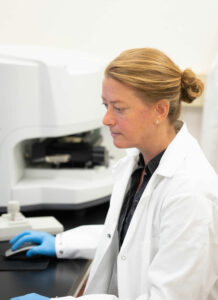
Instrumentation includes:
- ThermoFisher Nicolet iN10 MX Infrared Microscope (or micro-FTIR). The micro-FTIR instrument is used to study plastic particles, charcoal, and beyond. This instrument was funded by the National Science Foundation.
- Various dissecting microscopes for imaging samples.
- Computers for image analysis and image processing.
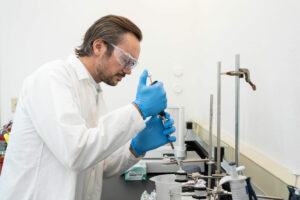
We accept samples for FTIR analysis for a fee. To date, we have conducted a suite of analyses for polymer scientists and biologists in the regions. Please email Monica Arienzo with details about the samples to be analyzed to discuss.
We also accept samples for the isolation and analysis of microplastics for a fee. We can work with you to design a sampling and sample preparation protocol to meet your study goals. Please email Monica Arienzo directly to learn more.
We also conduct workshops and training about microplastic sampling, sample preparation, and FTIR analysis. Please email Monica Arienzo directly to learn about our next workshop and training opportunity.
Exploring Microplastics At Home!
This is an at home activity to explore the world of plastics. See how you can explore microplastics at home!
Our team has talked to many community members since launching our research, and the most common question we get is: “So what can I do about the microplastics problem?”. We created a list of seven evidence-based solutions that you can easily do to make an impact.
Don’t forget to check out the “Myths about Microplastics” that illuminate some of the common misconceptions related to microplastics.
There are no current opportunities.
Learn More
DRI Blog: Problem Plastics
Read the “Behind the Science” story about the microplastics research team sampling at Lake Tahoe.
Microplastics found in Lake Tahoe for the First Time
Read about DRI’s discovery of microplastics in the waters of Lake Tahoe in the LA Times.
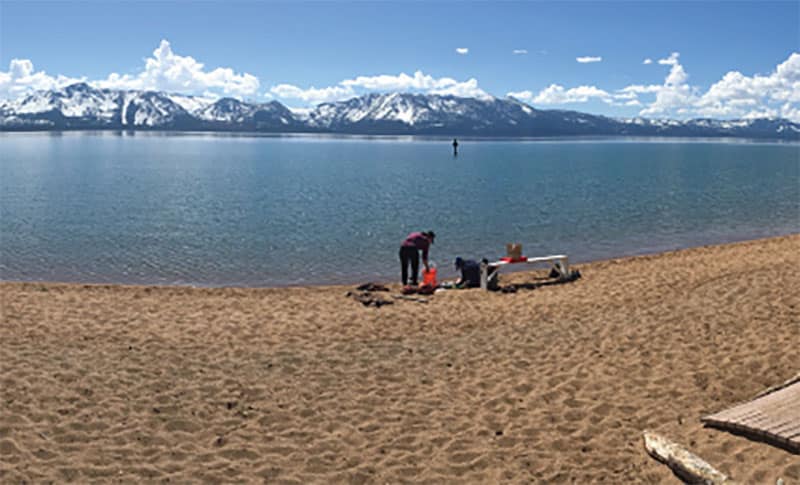
Advancing Solutions for Microplastics in Lake Tahoe
Download DRI’s Advancing Solutions for Microplastics in Lake Tahoe article.
CONTACT
Monica Arienzo, Ph.D.
Lab Director
Monica.Arienzo@www-dev.dri.edu
Meghan Collins, M.Sc.
Associate Research Scientist
Meghan.Collins@www-dev.dri.edu
LAB LOCATION
Desert Research Institute
2215 Raggio Parkway
Reno, NV 89512
DIVISION
Hydrologic Sciences
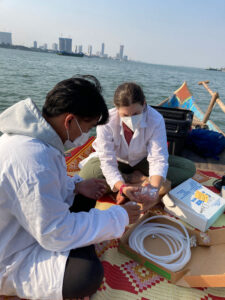 s that will improve on existing approaches by increasing the ease of sample collection and analysis, advancing data quality, and establishing standardization guidelines to facilitate microplastic pollution comparisons between studies. Funding is provided by the National Science Foundation. Link to publication.
s that will improve on existing approaches by increasing the ease of sample collection and analysis, advancing data quality, and establishing standardization guidelines to facilitate microplastic pollution comparisons between studies. Funding is provided by the National Science Foundation. Link to publication. 